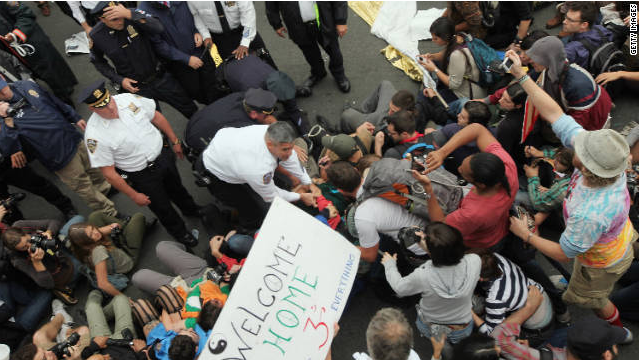
CNN.com is very good at covering breaking news, from the death of American inventor Steve Jobs to the death of Libyan dictator Moammar Gadhafi. The website is sure to have multiple in-depth articles and videos covering the news in a very quick time frame.
A quick search for Gadhafi on CNN.com will bring up 23 pages of results that have been updated since the first reports of Gadhafi's capture and death--230 results in total. CNN.com did not just have articles that explained that facts of the situation. The results range from videos from CNN's television broadcast to reactions from Libyans shooting into the air to American pundits writing about what this means for Libya and the United States.
One video was of a high school teacher who had her second grade class write letters to Gadhafi in 1986. Gadhafi actually responded to the letters, although he spinned what the second-graders had written into pro-Gadhafi propaganda. The video showed the letters and had the teacher reflecting on what Gadhafi's death means to her.
CNN's Breaking News Twitter account was also constantly updating the news. The first tweet said that Gadhafi had been captured, followed by tweets that a "big fish" had been captured, but it was unconfirmed whether it was Gadhafi, to tweets that the leader had been killed, although this was followed by tweets that this could not be confirmed.
A quick search for Gadhafi on CNN.com will bring up 23 pages of results that have been updated since the first reports of Gadhafi's capture and death--230 results in total. CNN.com did not just have articles that explained that facts of the situation. The results range from videos from CNN's television broadcast to reactions from Libyans shooting into the air to American pundits writing about what this means for Libya and the United States.
One video was of a high school teacher who had her second grade class write letters to Gadhafi in 1986. Gadhafi actually responded to the letters, although he spinned what the second-graders had written into pro-Gadhafi propaganda. The video showed the letters and had the teacher reflecting on what Gadhafi's death means to her.
CNN's Breaking News Twitter account was also constantly updating the news. The first tweet said that Gadhafi had been captured, followed by tweets that a "big fish" had been captured, but it was unconfirmed whether it was Gadhafi, to tweets that the leader had been killed, although this was followed by tweets that this could not be confirmed.





 RSS Feed
RSS Feed